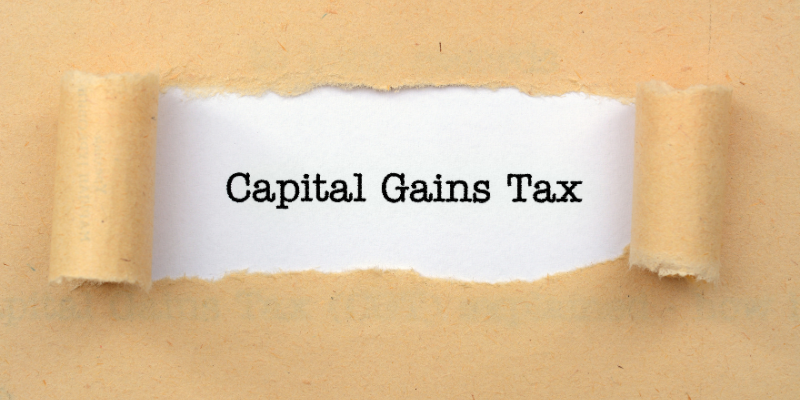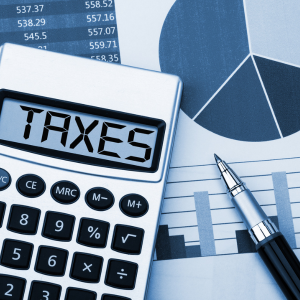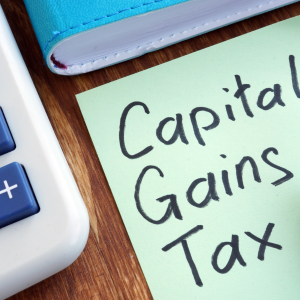
Richardson, TX Capital Gains Tax Calculator for Long-Term and Short-Term

Navigating capital gains taxes can be difficult, especially in a thriving community like Richardson, Texas. Whether you’re dealing with long-term or short-term capital gains, knowing how to calculate potential taxes is essential. Our Richardson, TX Capital Gains Tax Calculator provides tailored insights to help you accurately estimate your tax obligations, ensuring a smoother financial journey with each transaction. Stay up to date on current tax rates and Texas regulations in order to maximize your investment returns and make informed decisions that benefit your financial goals.
Key Highlights
- Tailored capital gains tax calculator helps Richardson, TX residents optimize financial decisions and estimate liabilities accurately.
- Understand capital gains as selling assets like stocks or property for profit, impacting taxes significantly.
- Short-term gains taxed as ordinary income; long-term gains enjoy lower rates, benefiting lengthy investments.
- Calculating capital gains involves determining the adjusted basis, sales price, and applicable gains rate.
- Use advanced tax calculators and professional advice to enhance capital gains tax planning effectively.
Understanding Capital Gains and Their Tax Implications
Navigating the world of capital gains can be challenging, but understanding the fundamentals is essential especially for residents of Richardson, Texas. Capital gains arise from the sale of assets like stocks or real estate and can significantly influence your overall financial outlook. To plan effectively, it’s important to understand the difference between short-term and long-term capital gains, along with their tax implications. As you gain insight into how capital gains affect your net worth, you’ll be better equipped to manage your portfolio and adapt to market changes. For those looking to simplify their real estate transactions, cash home buyers in Richardson and surrounding Texas cities can provide a fast and efficient way to unlock your property’s value without the usual delays.
What Are Capital Gains?
Capital gains occur when you sell a capital asset for more than its original purchase price. This gain isn’t realized until the asset is sold; until then, any increase in value remains a paper gain. Capital assets can include stocks, bonds, real estate, and other investments. Essentially, a capital gain measures the increase in your investment’s value over time, reflecting its market performance. Understanding these gains is crucial, as they directly affect your tax liability. Capital gains can be categorized as either realized or unrealized. Realized gains occur when an asset is sold and impact your taxes, while unrealized gains represent potential profits from assets you still hold.
Capital gains are taxed at different rates depending on how long you’ve held the asset and your income bracket. Generally, gains are classified as short-term or long-term, which determines the applicable tax rate. Short-term gains on assets held for less than a year are taxed at ordinary income rates, typically higher than long-term rates. This distinction makes it important for investors to plan their transactions carefully, considering both short- and long-term implications to minimize taxes and maximize financial returns.
Types of Capital Gains: Short-Term vs. Long-Term
When discussing capital gains, it is critical to distinguish between short-term and long-term categories, as each has unique tax implications. Short-term capital gains are derived from selling assets held for one year or less and are taxed at your ordinary income tax rate, which is frequently higher than the rate for long-term gains. As a result, short-term gains can have a significant impact on your tax bill, particularly if you are in a higher income bracket. Long-term capital gains, on the other hand, are realized when assets are sold after being held for more than a year and are taxed at a lower rate. These lower interest rates are intended to encourage long-term investing, benefiting both the overall economy and individual investors seeking consistent portfolio growth.
The distinction between short-term and long-term gains highlights the value of careful financial planning. Holding investments long enough to qualify for long-term rates can help reduce tax liabilities while increasing returns. When preparing to sell capital assets, it is critical to align your investment strategy with your financial objectives and to consider the timing of each sale. Understanding these principles allows you to make more informed decisions that improve your tax outcomes and support your long-term financial goals.
Overview of Capital Gains Tax in Richardson, TX
For investors in Richardson, TX who aim to maximize their earnings and stay on top of their taxes, understanding capital gains tax is essential. When you sell a capital asset for a profit, that profit becomes subject to capital gains tax. It’s crucial to distinguish between short-term and long-term gains, as each comes with its own tax rates and financial implications. Gaining a deeper understanding of how these taxes are calculated, the current rates, and effective planning strategies can greatly influence your financial outlook. If you’re navigating property investments or looking to sell, House Buying Heros in Richardson can help guide you toward smarter, more tax-efficient decisions.
How Capital Gains Tax Works
Richardson, TX’s capital gains tax is governed by federal regulations and varies based on asset holding time and income bracket. When you sell a capital asset, the gain, or what you earn over the purchase price, is taxable. Short-term capital gains are taxed at ordinary income rates since assets are held for less than a year. This means that if you’re in a higher income bracket, your gain tax could be significant. Understanding the gains tax mechanism is crucial for effective financial planning, particularly when considering the tax impact on your portfolio.
Long-term capital gains are frequently taxed at a lower rate. For assets held for more than a year, the tax rate is typically 0%, 15%, or 20%, depending on your taxable income. This tiered system is designed to encourage longer investment horizons. Residents of Richardson, TX can reduce their tax burden by strategically timing their asset sales. If you are considering significant sales or portfolio restructuring, consult with tax professionals to assess your specific situation.
Furthermore, it is critical to understand the exemptions and reliefs that may apply to capital gains tax. For example, gains from the sale of your primary residence may be tax deductible under certain circumstances. This primarily applies to profits earned from the sale of a home in which you have lived for a set period of time. Maintaining a keen awareness of such nuances enables you to fully capitalize on potential exemptions, thereby optimizing your overall tax plan.
Current Tax Rates for Capital Gains
Capital gains tax rates in Richardson, TX follow a progressive structure that encourages long-term investments and aligns with income levels. Short-term capital gains are taxed at the same rate as regular income, which ranges from 10% to 37%. Higher earners pay higher tax rates on short-term gains, as determined by their tax bracket. This highlights the importance of strategic planning in asset sales in order to avoid unnecessary tax liabilities.
Long-term capital gains taxes are more favorable, with rates ranging from 0% to 20% depending on income. If you have a lower income, you may be eligible for 0% tax on long-term gains, which provides a significant advantage to those who plan their investments wisely. This preferential treatment not only encourages individuals to keep their investments, but it also provides a means to reduce tax liabilities while engaging in profitable ventures.
Strategic investors in Richardson, TX should understand the current tax rates and their implications. It allows you to create a well-informed financial strategy based on your income bracket and investment timelines. By aligning your portfolio management with these rates, you can maximize your capital gains while lowering your overall tax burden. Using available resources and perhaps consulting financial advisors can help you better understand and apply these tax structures, resulting in more effective financial and tax planning.
Calculating Capital Gains: A Step-by-Step Guide

Anyone involved in the sale of assets in Richardson, TX, should understand how to calculate capital gains. This guide will teach you how to calculate your capital gains tax manually and how to use tools such as free calculators to estimate your liabilities. Whether you’re dealing with long-term or short-term assets, understanding how to calculate your sales price, adjusted basis, and various tax liabilities can have a big impact on how much money you pay. Let’s look at the manual calculation methods and the benefits of using a tax calculator to make the process easier.
How to Calculate Capital Gains Tax Manually
Calculating capital gains tax manually entails a series of steps that necessitate precision and attention to detail, particularly when determining your asset’s adjusted basis. To begin, determine the original purchase price, including any related purchase expenses such as broker fees, which will serve as the foundation for your calculation. Adjust this basis to account for any improvements or expenses that may have increased the asset’s value over time. Then, calculate the sales price, or the amount received for selling the asset. To determine your capital gain, subtract the adjusted basis from the sale price.
Next, decide whether your gain is short-term or long-term, as determined by the holding period. If held for a year or less, it is considered a short-term gain and is taxed at ordinary income rates, which is an important factor to consider in your overall tax strategy. Long-term gains, with assets held for more than a year, have better rates.
Once you’ve classified the gain, use the gain rate that is appropriate for your income bracket. Understanding these rates is critical because they have a direct impact on the taxes owed. A thorough understanding of rates aids in optimizing the amount paid. The manual approach reveals the actual tax liabilities by staying up to date on tax codes and performing accurate calculations. Completing this analysis on your own allows you to better understand and strategize your financial portfolio in order to effectively manage your tax implications.
Using a Capital Gains Tax Calculator
A capital gains tax calculator makes it easier to estimate taxes on your investments. A free calculator allows investors to quickly determine their financial obligations by entering pertinent information such as the sales price and adjusted basis of the asset. When you use a tax calculator, it will automatically apply the appropriate gain rate based on whether your asset is short-term or long-term. These tools offer not only convenience but also accuracy, helping to eliminate errors that may occur when calculating manually.
Furthermore, calculators are programmed to use the most recent tax rates and account for changes in tax laws, ensuring that your calculations are up to date. They also enable comparisons between different scenarios, demonstrating how different asset sales may affect your total tax liabilities, which is useful for strategic financial planning. This flexibility helps investors decide when to sell assets while minimizing gains tax. Thus, using a calculator empowers individuals to become more informed, allowing them to make sound, strategic decisions about their investment portfolio.
In Richardson, TX, where tax rates can have a significant impact on financial outcomes, using a calculator is essential for investment planning and optimization. These calculators simplify and streamline the process of managing and projecting future tax obligations, making compliance more manageable. You can effectively plan asset sales while minimizing tax burdens by incorporating a comprehensive tax calculator into your financial toolkit. This tool is invaluable not only for seasoned investors, but for anyone looking to gain clarity and control over their capital gains strategy.
| Step | Description | Tools/Resources | Benefits |
|---|---|---|---|
| 1 | Gather necessary financial documents | Investment records, sale receipts | Accurate baseline for calculations |
| 2 | Determine cost basis | Original purchase price, additional costs | Precise assessment of initial investment |
| 3 | Calculate capital gains | Manual calculations, spreadsheets | Understand detailed breakdown of profits |
| 4 | Use tax calculators | Online calculators, tax software | Quick and efficient results, user-friendly |
This table provides a clear and concise overview of the steps involved in calculating capital gains manually versus using a dedicated calculator, showcasing the advantages of each method.
Special Considerations for Long-Term Capital Gains
For residents of Richardson, Texas, long-term investments often offer appealing advantages within the U.S. tax system, especially regarding capital gains. Building a secure financial future starts with understanding these benefits and planning your investments strategically for long-term growth. Recognizing the specific tax advantages tied to long-term capital gains and applying strategies to maximize them over time can lead to substantial financial rewards. To learn more about streamlining your investment or property-selling process, explore how House Buying Heros buys homes and discover how their straightforward approach can help you achieve your goals efficiently.
Long-Term Capital Gains Tax Advantages
Long-term investing offers tax benefits, encouraging asset retention for over a year. The main benefit is that long-term capital gains are taxed less than short-term ones, which are subject to ordinary income tax. Many investors can convert high ordinary income rates into much better lower brackets by holding assets longer than a year. Current long-term capital gains tax rates vary from 0% to 20%, depending on income and filing status. This structured relief encourages long-term holding, making it profitable.
Tax rates are not the only incentive for long-term capital gains. Long-term investments often support economic goals like stability and predictable growth, forcing investors to broaden their market perspective. Holding equities and managing investments wisely can help Richardson, TX investors align with long-term market participation policies. Understanding capital gains helps investors use tax-loss harvesting to offset gains, which can boost this strategy’s benefits.
Making informed decisions about asset sales timing can improve your financial well-being. Knowing about gains tax changes or tax legislation changes is crucial. Thus, knowing current laws and future projections can save you a lot. You can optimize yields by using long-term capital gains incentives and monitoring their effects on your portfolios. Thus, anyone seeking responsible portfolio growth must understand these regulations and their implications.
Strategies for Optimizing Long-Term Capital Gains
Optimizing long-term capital gains involves strategic planning and a thoughtful approach to managing and selling investments. A key strategy is to schedule asset sales strategically to stagger gains and minimize tax impact. For instance, selling assets in alignment with your income bracket can help you take advantage of favorable long-term capital gains rates. This approach keeps taxable income lower, reducing your overall tax burden while maximizing profits. For real estate investors, working with investor home buyers in Dallas and other cities in Texas can also be a smart move, offering a quick and efficient way to liquidate assets while maintaining control over financial outcomes.
In addition, many investors benefit from using tax-advantaged accounts. Long-term capital gains can be managed effectively using retirement accounts like IRAs and 401(k). These accounts frequently allow tax deferral on investments, providing tax-free growth until withdrawals are made. Understanding when and how to use these accounts can protect your investments from immediate tax consequences, particularly for long-term gains.
Strategic gifting is yet another effective technique. Transferring appreciated assets to family or charitable organizations can effectively reduce one’s gain tax liability. This strategy not only aligns with personal wealth management objectives, but it also promotes philanthropic goals. Employing these strategies in Richardson, TX requires a delicate balance of understanding personal circumstances, legal frameworks, and potential financial consequences.
Finally, staying on top of tax law changes, residency-based credits, and deductions is essential. Working with professional financial advisors or tax experts who are familiar with Richardson’s tax landscape can provide invaluable insights into how to maximize long-term gains. This comprehensive approach ensures that your strategy not only maximizes potential returns, but also aligns with current and projected tax environments. Understanding these nuanced strategies allows you to plan wisely, ensuring your investments are managed in accordance with the changing gains tax landscape.
Resources and Tools for Capital Gains Tax Planning

The use of appropriate resources and tools is required for effective capital gains tax planning. Investors in Richardson, TX can optimize their financial strategies by using advanced tax calculators and seeking professional advice. These tools are extremely helpful in navigating capital gains taxes, ensuring precise calculations, and maximizing potential savings. Understanding how to use a comprehensive tax calculator and where to find professional advice is critical for effective capital gains planning. By leveraging these resources, you can confidently manage your tax obligations while also improving your investment outcomes.
Using a Comprehensive Tax Calculator
A comprehensive tax calculator is a necessary tool for investors to accurately calculate their capital gains taxes. This tool streamlines the tax calculation process while providing clarity and precision. When using a tax calculator, people can enter detailed information such as the sales price, original purchase amount, and any improvements made to the asset to get accurate estimates of their tax liability. This automation is critical because it eliminates complexities and potential human errors from manual calculations, particularly when comparing different tax brackets for short-term and long-term gains.
Furthermore, a tax calculator incorporates the most recent tax rates, adjustments, and deductions, ensuring compliance with current regulations. This ensures that your estimated capital gains taxes are current and accurate. There are free calculator options available online, allowing you to easily access these vital resources. Residents of Richardson, TX, can use such a calculator to make informed decisions about when to sell assets, including understanding the tax implications of each possible transaction.
Furthermore, calculators provide scenario analysis, demonstrating the impact of various sales strategies on your overall tax obligations. By examining how different approaches affect your tax liabilities, you can strategically time asset sales to reduce taxes while increasing net returns. This level of planning is critical for maximizing both short-term and long-term investment outcomes while adhering to regulatory requirements. Finally, using a comprehensive tax calculator provides you with the information you need to make sound financial decisions, thereby optimizing your capital gains planning.
Where to Seek Professional Advice on Tax Calculation
While using a tax calculator is a good start, professional advice can help you improve your financial strategy even more. Tax professionals provide personalized insights that exceed what a calculator can provide, addressing specific scenarios and strategic complexities. Engaging with experts who understand the nuances of capital gains tax can help clear up confusion and ensure accurate tax planning. These professionals stay up to date on the latest tax laws and can provide advice tailored to your specific situation, whether you have complex asset portfolios or significant capital gains.
Consulting a local tax advisor or financial planner who is familiar with state-specific regulations provides additional benefits to Richardson residents. These experts have a thorough understanding of the local tax implications and can offer effective strategies for navigating Richardson’s tax landscape. They can identify potential deductions and credits, tailoring your strategy for maximum tax savings. Furthermore, professional advisors can help you plan for capital gains and long-term investment strategies that are in line with your financial objectives.
Furthermore, professionals can help you navigate tax-saving opportunities such as tax-loss harvesting or optimal asset allocation. Strategically structuring your investments can help reduce tax liabilities, allowing you to keep more of your capital gains. Beyond immediate tax concerns, they provide comprehensive financial planning, preparing you for future changes in tax legislation that may affect your capital gains tax strategy. Finally, seeking professional advice is invaluable in supplementing your use of tax calculators, combining technology and human expertise for the best results in your capital gains planning.
FAQs:
What are capital gains, and how do they affect taxes?
Capital gains are profits earned from the sale of a capital asset such as stocks or property. If the sale price exceeds the purchase price, the difference is a capital gain, impacting your tax liability. These gains are categorized as either short-term or long-term, with different tax implications.
What is the difference between short-term and long-term capital gains?
Short-term capital gains are gains on assets held for one year or less and are taxed at ordinary income tax rates. Long-term capital gains refer to gains on assets held for more than a year and are taxed at reduced rates, typically 0%, 15%, or 20% depending on income.
How is capital gains tax calculated?
The capital gains tax is calculated by determining the adjusted basis of the asset, subtracting it from the sale price to find the gain, and then applying the appropriate tax rate. Long-term capital gains enjoy lower tax rates than short-term gains.
What tools can help estimate capital gains tax in Richardson, TX?
Residents of Richardson, TX, can use advanced tax calculators tailored to their specific region to estimate capital gains tax. These calculators provide updated rates and regulations, making it easier to plan financial decisions effectively.
What strategies can optimize capital gains tax planning?
Effective strategies include holding assets for over a year to benefit from lower long-term tax rates, using tax-advantaged accounts such as IRAs and 401(k)s, and consulting with tax professionals for personalized advice. Planning asset sales strategically can also minimize tax liabilities.
Helpful Richardson Blog Articles
- Explore Richardson, TX Neighborhood Map
- Is Richardson, TX a Good Place to Live?
- Richardson, TX Property Tax Rate
- Best Richardson, TX Property Manager
- Best Things To Do in Richardson, TX With Kids
- Fun Facts About Richardson, TX
- Richardson, TX Capital Gains Tax Calculator
- Richardson, TX Closing Costs Calculator
- Explore the Cost of Living in Richardson, TX
- Fun Facts About Richardson TX

